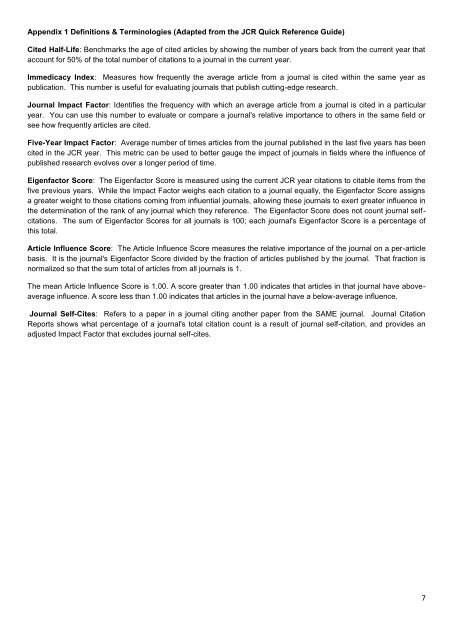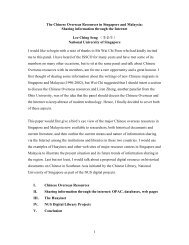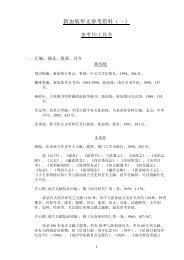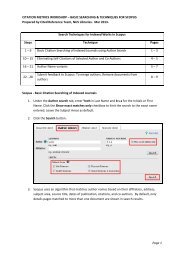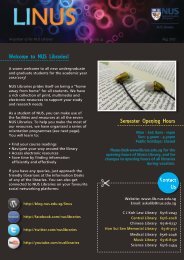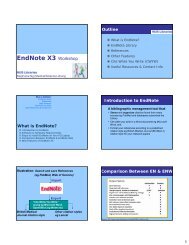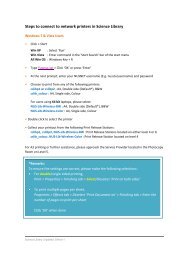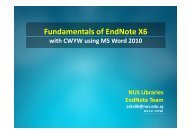JOURNAL CITATION REPORT (JCR) - NUS Libraries
JOURNAL CITATION REPORT (JCR) - NUS Libraries
JOURNAL CITATION REPORT (JCR) - NUS Libraries
You also want an ePaper? Increase the reach of your titles
YUMPU automatically turns print PDFs into web optimized ePapers that Google loves.
Appendix 1 Definitions & Terminologies (Adapted from the <strong>JCR</strong> Quick Reference Guide)<br />
Cited Half-Life: Benchmarks the age of cited articles by showing the number of years back from the current year that<br />
account for 50% of the total number of citations to a journal in the current year.<br />
Immedicacy Index: Measures how frequently the average article from a journal is cited within the same year as<br />
publication. This number is useful for evaluating journals that publish cutting-edge research.<br />
Journal Impact Factor: Identifies the frequency with which an average article from a journal is cited in a particular<br />
year. You can use this number to evaluate or compare a journal's relative importance to others in the same field or<br />
see how frequently articles are cited.<br />
Five-Year Impact Factor: Average number of times articles from the journal published in the last five years has been<br />
cited in the <strong>JCR</strong> year. This metric can be used to better gauge the impact of journals in fields where the influence of<br />
published research evolves over a longer period of time.<br />
Eigenfactor Score: The Eigenfactor Score is measured using the current <strong>JCR</strong> year citations to citable items from the<br />
five previous years. While the Impact Factor weighs each citation to a journal equally, the Eigenfactor Score assigns<br />
a greater weight to those citations coming from influential journals, allowing these journals to exert greater influence in<br />
the determination of the rank of any journal which they reference. The Eigenfactor Score does not count journal selfcitations.<br />
The sum of Eigenfactor Scores for all journals is 100; each journal's Eigenfactor Score is a percentage of<br />
this total.<br />
Article Influence Score: The Article Influence Score measures the relative importance of the journal on a per-article<br />
basis. It is the journal's Eigenfactor Score divided by the fraction of articles published by the journal. That fraction is<br />
normalized so that the sum total of articles from all journals is 1.<br />
The mean Article Influence Score is 1.00. A score greater than 1.00 indicates that articles in that journal have aboveaverage<br />
influence. A score less than 1.00 indicates that articles in the journal have a below-average influence.<br />
Journal Self-Cites: Refers to a paper in a journal citing another paper from the SAME journal. Journal Citation<br />
Reports shows what percentage of a journal's total citation count is a result of journal self-citation, and provides an<br />
adjusted Impact Factor that excludes journal self-cites.<br />
7


